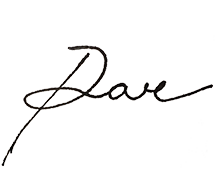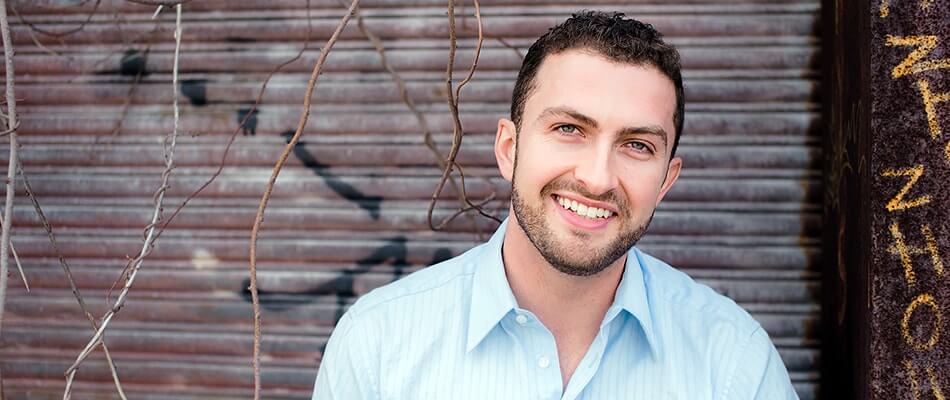INTRO: All 10 episodes of my new podcast’s debut season are now live and available for streaming. Click here for details on what a podcast is, why I’ve started one, and how to listen to all 10 episodes at your leisure.
Hi friend,
It’s been nearly a month since I wrote you last, and while I’m sure my absence from your inbox has not given you cause for alarm — let alone, motivated you to enlist Tommy Lee Jones a la his character in the 1993 thriller, The Fugitive, to track your ol’ friend Dave down — the truth is that I always feel a twinge of guilt when I spread out my newsletter calendar to be a little less frequent, even in the height of summer, and even when most of us in the Northern Hemisphere are offline and (ideally!) enjoying these long, warm days.
And yet, if I was venturing a confident guess, I’d say you probably haven’t noticed the change in my writing you this summer at all.
Why?
Well, it’s nothing personal — I’m not daring you to pay more attention to the things I write. Really, I’m giving you the benefit of the doubt.
It’s hard to say that any of us would really miss “more of” anything streaming into our attention spans nowadays — whether that’s more stuff in your inbox, more book news and course offers, more sales pitches, more resources, more podcast episodes, more shows popping up on Netflix, or so on.
It’s almost silly to suggest that any of us are missing the more we could be getting — because we are all living in an age of absolute overwhelm.
We are overwhelmed by content.
We are overwhelmed by distractions.
We are overwhelmed by ads.
We are overwhelmed by noisy devices, and attention-baiting apps, and addictive-by-design social media platforms.
We are overwhelmed by such “norms for modern living” — even if we don’t fully realize it, because of just how “normal” it’s seemingly become to be constantly overwhelmed and anxious.
Before I start to sound all dramatic, Orwellian, or the-sky-is-falling on you, I offer these little statistics that I came across this summer:
- In the last 5 years alone, daily consumption of media for the average American adult grew by 23.9% to an astonishing 12 hours and 9 minutes per day (1)
- A 2007 study in the New York Times reported that the average American consumer is exposed to up to 5,000 ads and/or brands per day (2)
- 39% of American poll respondents reported feeling “more anxious” this year than they were at this time last year, while another 39% said they were equally anxious (3)
- According to the Anxiety and Depression Association of America, approximately 40 million American adults or 18% of the US population have an “anxiety disorder” (4)
It’s not just anecdotal to suggest that we’re all stressed and overwhelmed — statistical evidence is stacking up to prove just how overwhelmed the pace and behaviors of modern living have become.
The tech in our pockets and upon which we rely every day to chat with friends, check-in on the kids, flirt with our partner, or even complete our jobs has, in large part, been designed to manipulate our psychology, create mindless and addictive patterns of behavior, and feed us with dopamine-induced chemical reactions for non-conscious habits.
Little, seemingly innocent behaviors — checking our phone, scrolling on Instagram, throwing on Netflix at the end of a long workday — is stretching our already-stretched and limited time, space and capacity thin to the point of snapping.
Worst of all, the tools upon which we have come to rely hijack what precious little space we possess.
The tragic cost is the mindfulness, contentment, ease, and peace that we all can say we value and desire more of in our lives.
It’s little wonder why anxiety disorders are on the rise; why overwhelm is the new normal; why “busy” has become a story all too familiar in our conversations and everyday exchanges.
…
When I suggest that you “haven’t noticed” or “missed” my newsletter lately, it’s because I believe that “too much” is already part of the problematic patterns of everyday life — challenges that we are all facing when we ask ourselves, ponder, and wonder how we can feel more spacious, purpose-driven, creative, artful, or content.
More stuff — especially for the sake of “more stuff” — is not the answer. It can’t be. The math — adding “more” to “too much already” — doesn’t compute.
Over this summer, I’ve found myself quietly rebelling against some of these norms in a conscious effort to reclaim my personal space; to end that persistent undercurrent of feeling-anxious-most-of-the-time, and, instead, to deliberately do, receive, and feel more of what I love.
The first effort I made was a self-commitment to try to do one “new” or simply “non-routine” thing every single day for 100 consecutive days. I’m up to Day 90 as I write you, and will tell you the rest of this story in a couple of weeks.
Meanwhile, I haven’t frozen my phone in a block of ice, or become a Zen Buddhist or minimalist type who only wears black tees and jeans now. I haven’t even renounced society to live in the Himalayan mountains, either.
The efforts I’ve made — as sustainable, achievable behavior changes really ought to be — have been small and incremental:
1. I disabled all audio-based, sound notifications on my iPhone and computer and devices, and I leave my phone ringer off at all times. This means no unchosen sounds, dings, twinkles, or alarms interrupt my attention span at any time — let alone, whenever someone else chooses to interrupt me (even friends and family)
2. I disabled all Push notifications on my iPhone and computer (except for Calendar reminders and To-Dos), which solely exist to make us stop doing what we’ve already chosen and prioritized to, instead, do something we’ve already decided is not a priority or good use of our time and attention
3. I closed my Facebook account this summer (as I did my Twitter account in 2016) to streamline not only how I engage with others but to limit how anyone can get in touch with me (it’s email or bust, basically)
4. I put a 5-minute time limit on my Instagram app on my phone — some of the only remaining social media that I still use — to curb my impulsive habit of checking it, or scrolling endlessly
5. I set new daily schedules consisting of 3- to 4-hour blocks of time on my workdays, through which I attempt to prioritize my self-knowledge rituals, my creative output, my client work, and my personal life, over anything else
…
As a natural byproduct of these efforts to reclaim my space and being more fiercely protective of my time, I’ve noticed a new and interesting habit result:
I feel far less self-induced pressure to add something “more” to my day when my day already feels perfectly “full already” of the things, activities, choices that I really value.
Sometimes, that even means writing less frequent newsletters to you — unless what’s being written and shared feels truly worthy and deserving of your time and attention, as it ought to with mine.
Sometimes, someone goes silent for a while — a friend in your community, a student at the yoga studio, or a writer whose newsletter is one you’re used to seeing routinely in your inbox.
Sure, something may be wrong. “Off.” Or a cause for worry.
But in the age of overwhelm in which we live, it may just be the most natural response we have to the burden of “too much” that is, slowly but surely, eroding the qualities of life that we desire the most.
Peace, mindfulness, satisfaction — and, I increasingly believe, our definitions of “success” — depend on it.
The first step to dealing with overwhelm, dear friend is to recognize what we can afford to leave behind.
What is one use of your time that you believe you can afford to let behind?
Is there a way that you can limit the time cost, energy use, or “distractability” factor that comes with it, even in a small way, over the next two weeks?
That’s the invitation I offer to you today.
In two weeks, I’ll tell you about what I’ve been doing with my space, and what I learned over the last 100 days.
Your partner in defense of time, space, energy, and the precious lives that we get to live,

Sources:
- Dolliver, M. (2019, May 30). US Time Spent with Media 2019. Retrieved August 16, 2019, from https://www.emarketer.com/content/us-time-spent-with-media-2019
- Story, L. (2007, January 15). Anywhere the Eye Can See, It’s Likely to See an Ad. Retrieved August 16, 2019, from https://www.nytimes.com/2007/01/15/business/media/15everywhere.html
- Ducharme, J. (2018, May 08). Almost 40% of Americans Are Becoming More Anxious. Retrieved August 16, 2019, from https://time.com/5269371/americans-anxiety-poll/
- Facts & Statistics. (n.d.). Retrieved August 16, 2019, from https://adaa.org/about-adaa/press-room/facts-statistics#
